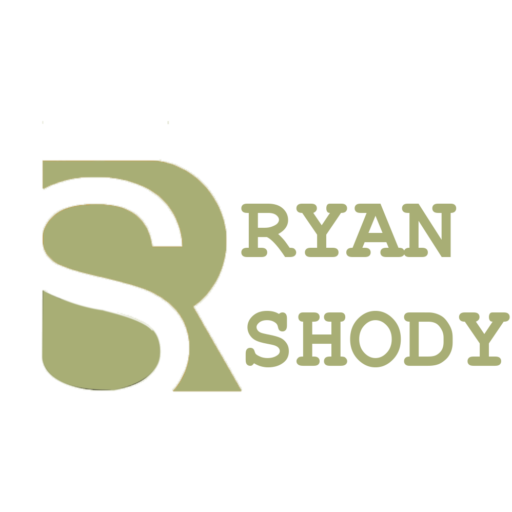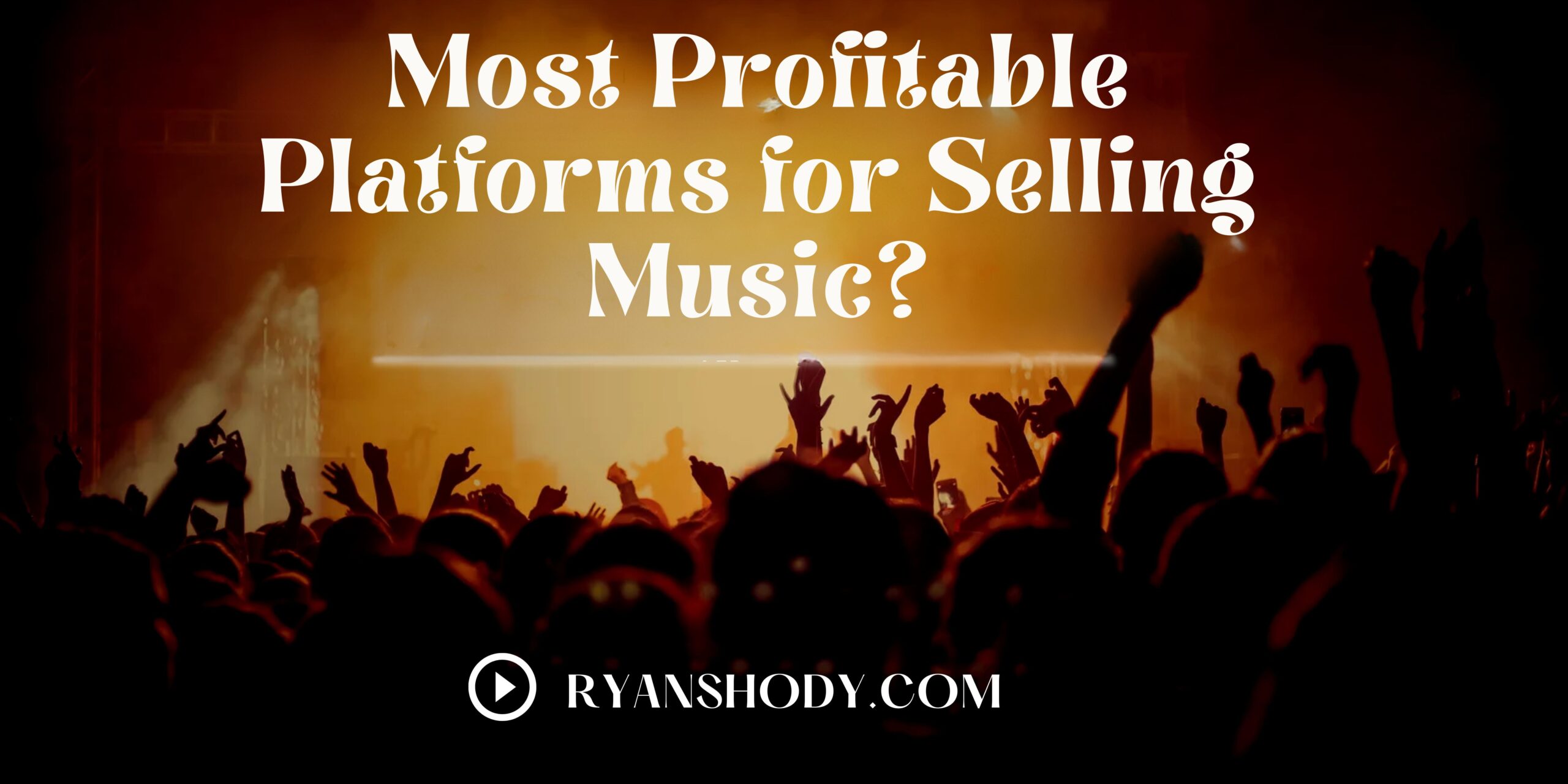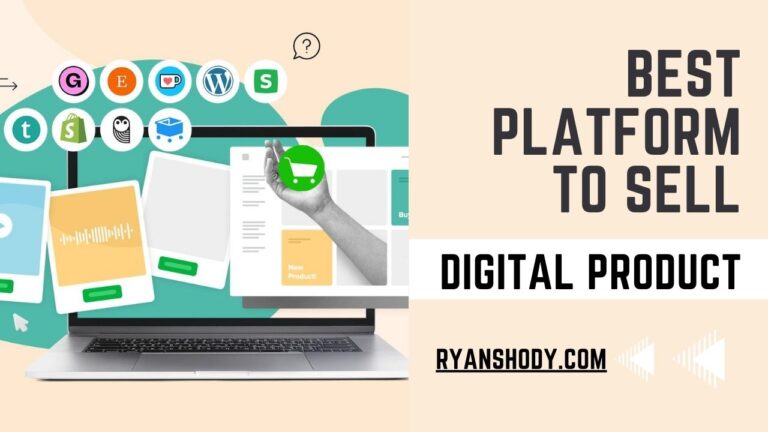In the ever-evolving music industry, choosing the right platforms for selling music is crucial for reaching a global audience and maximizing revenue.
Whether you’re an independent artist, producer, or part of a record label, leveraging the right platform can significantly impact your success.

This review will cover the most profitable platforms in 2025, including Spotify, Apple Music, Amazon Music, Audiomack, and six other top platforms, providing you with the insights needed to make an informed decision.
Verdict
In 2025, the landscape of platforms for selling music is more competitive than ever. Each platform offers unique features that cater to different needs, from Spotify’s global reach and playlist placements to Audiomack’s free streaming model that benefits emerging artists.
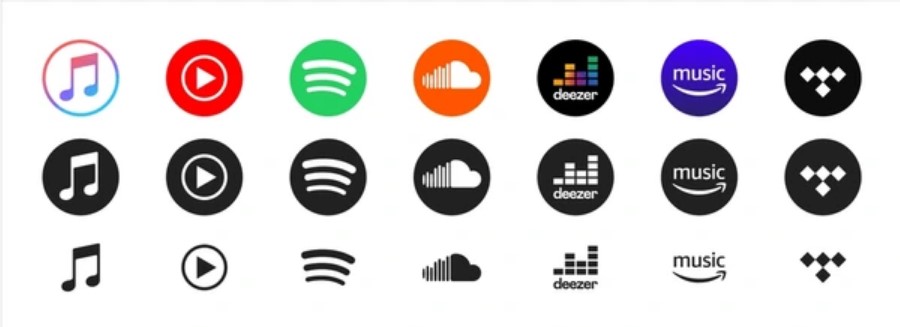
Choosing the right platform depends on your specific goals, whether it’s maximizing revenue, reaching a broad audience, or building a dedicated fanbase.
The right choice will enhance your visibility, streamline your sales process, and ultimately increase your revenue.
Key Features
When selecting platforms for selling music, several key features are critical in determining their effectiveness for your distribution strategy:
- Revenue Share and Pricing Models: The percentage of revenue that artists keep and any costs associated with using the platform.
- Global Reach: The ability of the platform to distribute music globally, ensuring that your tracks are accessible to a wide audience.
- User Interface and Experience: The ease of use in uploading music, managing profiles, and analyzing sales data.
- Promotion and Marketing Tools: Tools that help artists promote their music, such as playlist placements, social media integrations, and email marketing.
- Integration with Other Services: The ability to connect with other platforms like CRM, social media, or other music services for seamless management.
What Are Platforms for Selling Music?
Platforms for selling music are digital services that allow artists, producers, and labels to distribute, promote, and sell their music online.
These platforms provide tools for streaming, downloading, and even physical sales, giving artists the flexibility to reach a global audience.
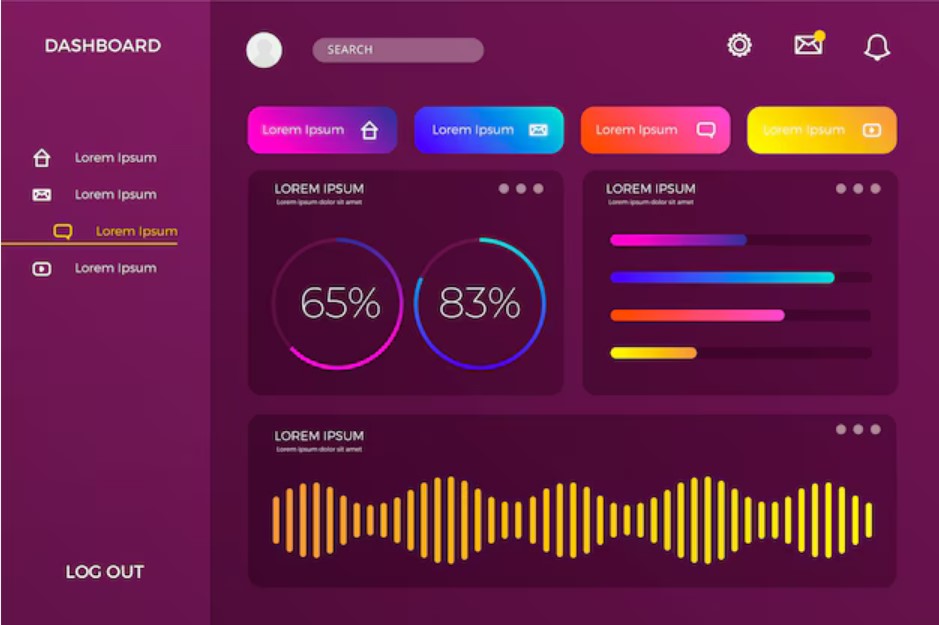
The most successful platforms offer comprehensive features that include analytics, marketing tools, and integrations with social media, helping artists grow their fanbase and revenue.
1. Spotify
Best For: Reaching a global audience through streaming.
Best Features: Massive user base, playlist placement opportunities.
Product Description: Spotify is one of the largest platforms for selling music through streaming.
With millions of active users worldwide, it offers unparalleled reach for artists looking to get their music heard by a global audience.
Spotify’s playlist placements can significantly boost an artist’s visibility, and the platform offers various tools to help manage your music and engage with listeners.

Ryan’s Advice: Best for artists aiming to reach a broad audience and benefit from streaming revenue.
Best Features for Platforms for Selling Music:
- Global Streaming Reach: Access to millions of listeners worldwide.
- Playlist Placements: Opportunities to be featured on popular playlists, driving significant streams.
- Spotify for Artists: Tools for managing your profile, analyzing listener data, and promoting your music.
- Monetization: Earn revenue from streams, with potential to increase through playlist features.
- Fan Engagement: Connect with fans through features like Spotify Wrapped and release notifications.
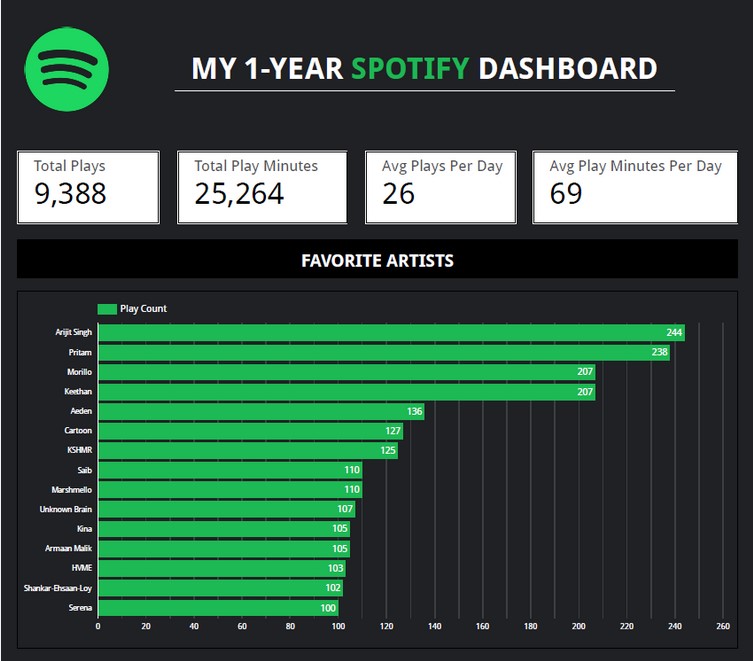
Product Pros:
- Extensive reach and exposure.
- Playlist placements can drive significant traffic.
- Detailed analytics and insights through Spotify for Artists.
- Integration with various promotional tools.
- Strong brand recognition and trust.
Cons:
- Lower revenue per stream compared to direct sales.
- Highly competitive, especially for new artists.
- Limited control over how your music is presented.
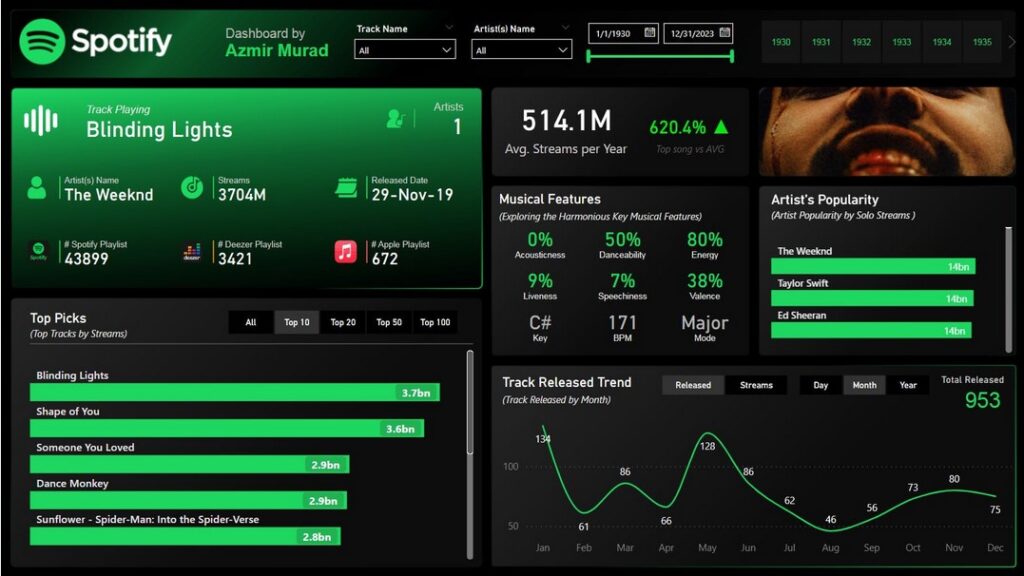
User Experiences and Case Studies:
- Rising Artist: A new artist leveraged Spotify’s playlist placements on one of the most popular platforms for selling music and achieved over 1 million streams in six months, significantly boosting their fanbase and social media following.
- Independent Label: By focusing on Spotify, a small label saw a 25% increase in overall streaming revenue, demonstrating the platform’s effectiveness as one of the top platforms for selling music in the industry.
Pricing and Subscription:
- Free Plan: Artists can upload music to Spotify through distributors, with no direct costs but varying distributor fees.
- Premium Plans: Distribution services like DistroKid offer annual plans starting at $19.99/year for unlimited uploads.
2. Apple Music
Best For: Artists seeking high-quality streaming and integration with Apple’s ecosystem.
Best Features: High-quality audio, integration with Apple devices.
Product Description: Apple Music is a premium platform for selling music that offers artists access to Apple’s extensive user base and ecosystem.
Known for its high-quality audio and seamless integration with Apple devices, it’s a favored choice for artists who prioritize audio fidelity and want to tap into Apple’s loyal customer base.
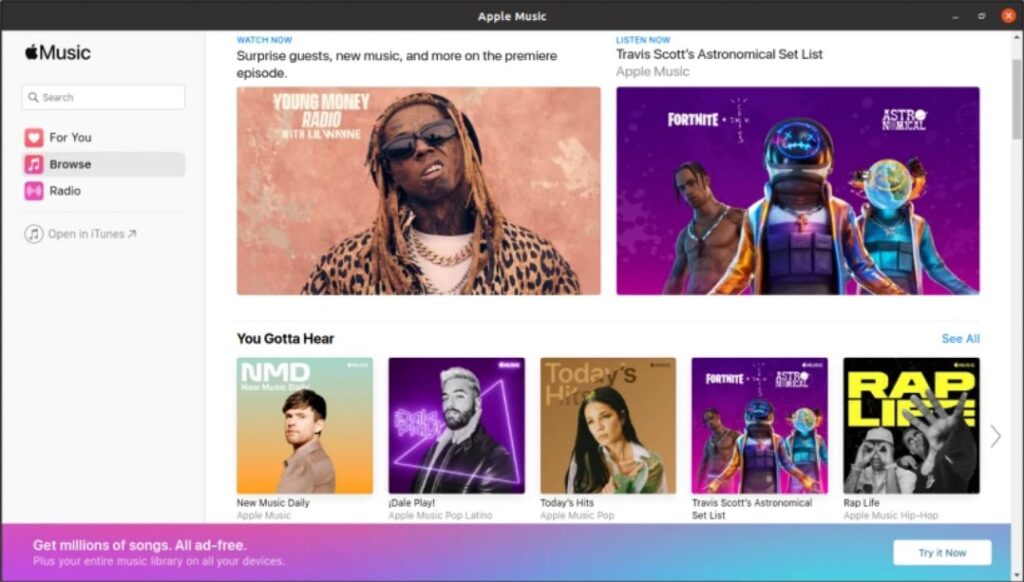
Ryan’s Advice: Perfect for artists with a focus on audio quality and those already within the Apple ecosystem.
Best Features for Platforms for Selling Music:
- High-Quality Streaming: Offers lossless and high-resolution audio options.
- Exclusive Releases: Opportunities for exclusive content and releases on the platform.
- Apple Ecosystem Integration: Seamless integration with Apple devices and services like Siri, Apple Watch, and more.
- Curated Playlists: Features curated by Apple’s editorial team, providing exposure to a selective audience.
- Fan Engagement: Tools for artists to connect with fans through exclusive content and experiences.
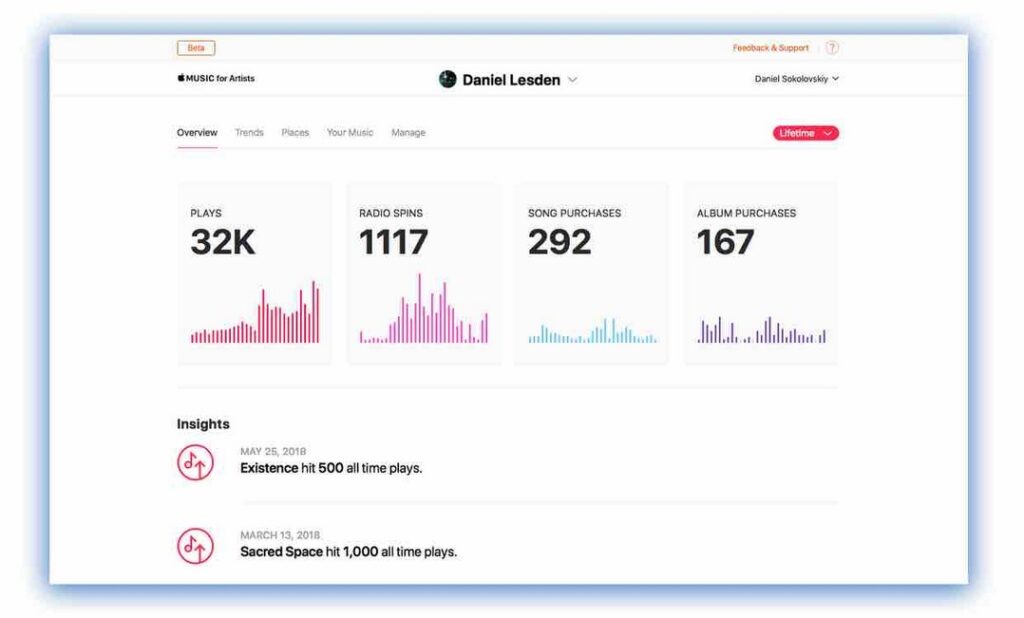
Product Pros:
- Superior audio quality.
- Strong integration with Apple devices.
- Opportunities for exclusive releases.
- Curated playlists offer selective exposure.
- Access to a dedicated and loyal user base.
Cons:
- Less user engagement compared to Spotify.
- Limited social features.
- Higher barriers to playlist placements.
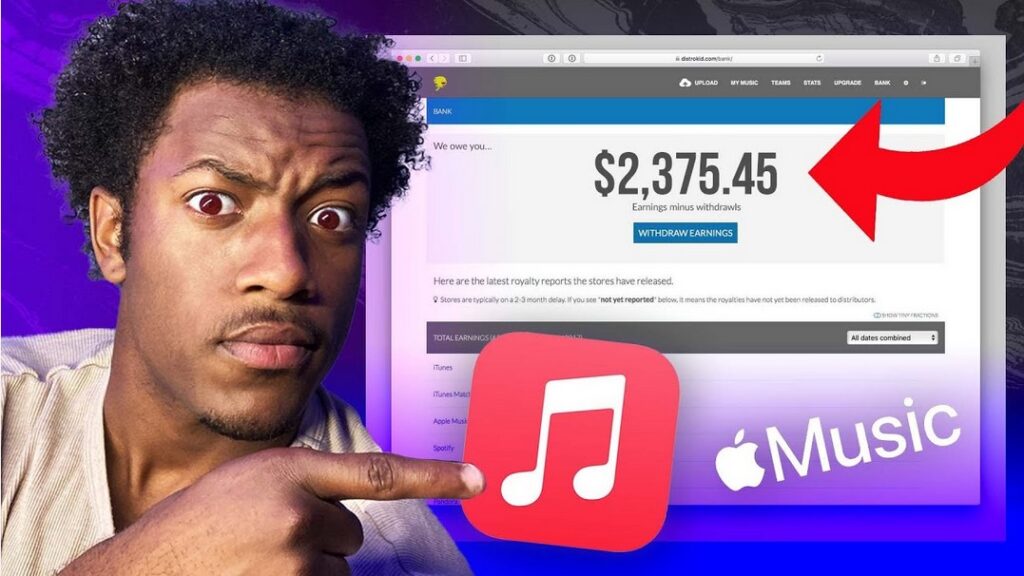
User Experiences and Case Studies:
- Indie Artist: An indie artist utilized Apple Music’s curated playlists, one of the best platforms for selling music, to gain significant traction, leading to increased streams and a noticeable spike in merchandise sales.
- Electronic Music Producer: By releasing high-quality audio on Apple Music, a premium platform for selling music, an electronic music producer appealed to audiophiles, which resulted in boosted sales of high-definition music files.
Pricing and Subscription:
- Free Distribution: Through services like TuneCore, starting at $9.99 per single.
- Apple Music for Artists: Free platform for managing your profile and analyzing data.
3. Amazon Music
Best For: Artists looking to reach Amazon’s massive customer base and leverage Alexa integration.
Best Features: Integration with Amazon’s ecosystem, including Alexa, and high-quality streaming options.
Product Description: Amazon Music is a growing platform for selling music that offers artists the ability to tap into Amazon’s vast customer base.
With features like integration with Alexa and high-quality streaming, Amazon Music is a solid choice for artists looking to expand their reach.
The platform also provides various promotional opportunities through Amazon’s extensive retail network.
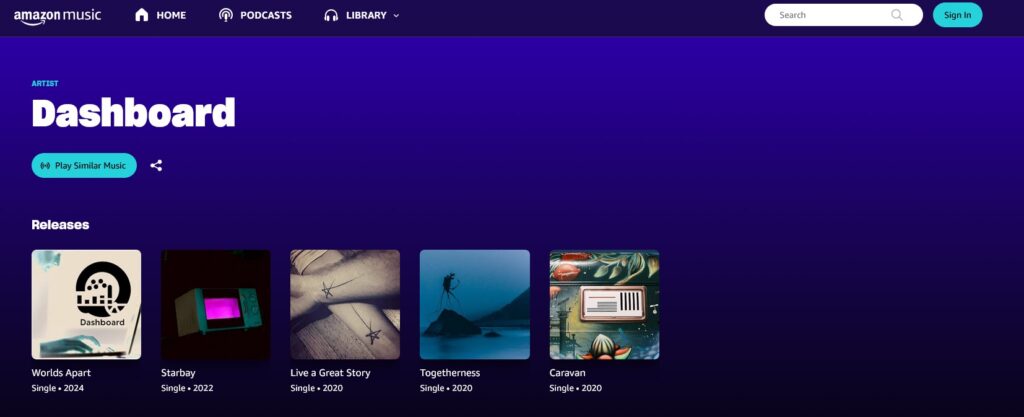
Ryan’s Advice: Ideal for artists who want to take advantage of Amazon’s ecosystem and reach a broad audience through voice-assisted devices.
Best Features for Platforms for Selling Music:
- Alexa Integration: Your music can be accessed through voice commands on millions of Alexa-enabled devices.
- Amazon Ecosystem: Leverage Amazon’s vast customer base for music promotion and sales.
- HD and Ultra HD Streaming: Offers high-quality audio streaming options.
- Artist Promotion: Opportunities for exposure through Amazon’s retail and streaming services.
- Fan Engagement: Tools to connect with fans through Amazon’s platforms, including integration with Twitch.
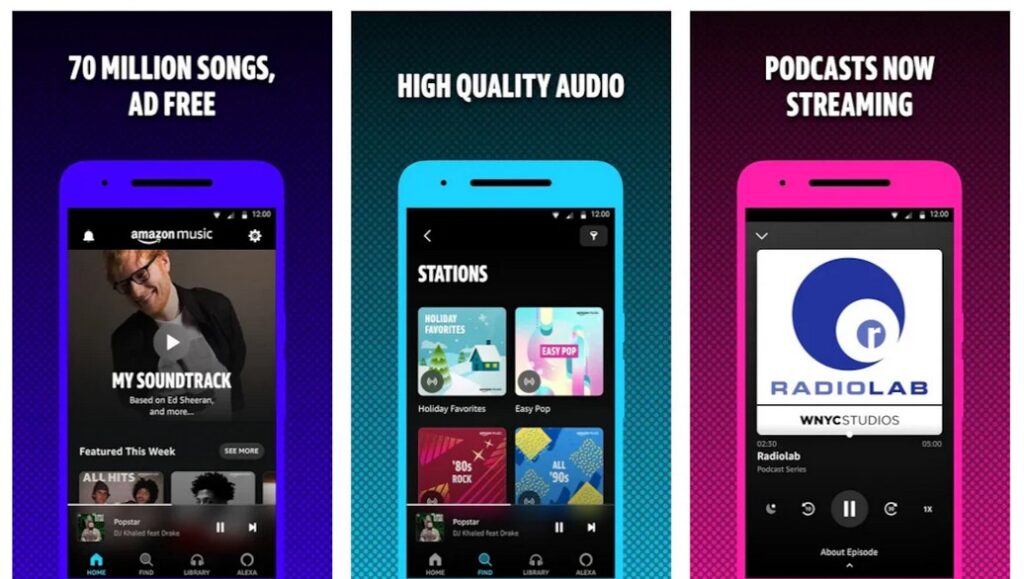
Product Pros:
- Access to Amazon’s massive customer base.
- High-quality audio streaming options.
- Integration with Alexa for voice-assisted music discovery.
- Promotional opportunities across Amazon’s ecosystem.
- Growing platform with increasing market share.
Cons:
- Less artist control compared to direct-to-fan platforms.
- Competitive market with many established artists.
- Lower royalty rates compared to some other platforms.
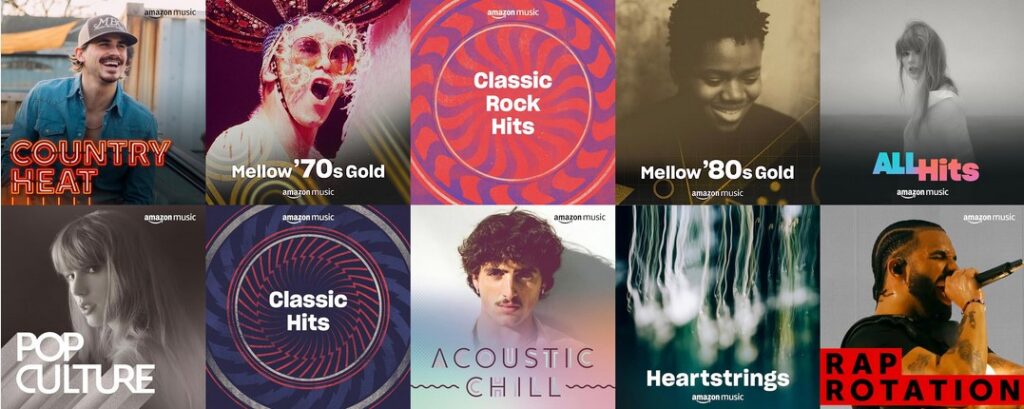
User Experiences and Case Studies:
- Country Music Artist: A country artist saw a 40% increase in album sales by tapping into Amazon Music, which is known as one of the leading platforms for selling music, particularly through its integration with physical product listings on Amazon.com.
- Pop Singer: By utilizing Alexa’s voice command feature, this pop singer promoted their music on Amazon Music, another major platform for selling music, resulting in a 30% increase in monthly listeners.
Pricing and Subscription:
- Amazon Music Unlimited: $9.99/month (or $7.99/month for Prime members), providing access to a large music catalog.
- Amazon Music HD: $14.99/month, offering high-definition streaming.
4. Audiomack
Best For: Emerging artists and independent musicians seeking a free, artist-friendly platform.
Best Features: Free music streaming, direct fan engagement, and monetization options.
Product Description: Audiomack is a popular platform for selling music that caters to independent artists and emerging musicians. The platform offers free music streaming and allows artists to directly engage with their fans.
Audiomack’s monetization options, such as AMP (Audiomack Monetization Program), enable artists to earn revenue from their streams, making it an attractive option for those just starting in the industry.

Ryan’s Advice: Best suited for artists looking to build a grassroots following and generate revenue without upfront costs.
Best Features for Platforms for Selling Music:
- Free Streaming: Unlimited free uploads and streaming for both artists and listeners.
- Direct Fan Engagement: Tools for connecting with fans through comments, messages, and social sharing.
- Monetization Program: Earn revenue through the Audiomack Monetization Program (AMP).
- Playlists and Trending: Opportunities to be featured on Audiomack’s trending charts and playlists.
- Mobile-Friendly: Strong presence on mobile platforms, with a significant user base in emerging markets.
Product Pros:
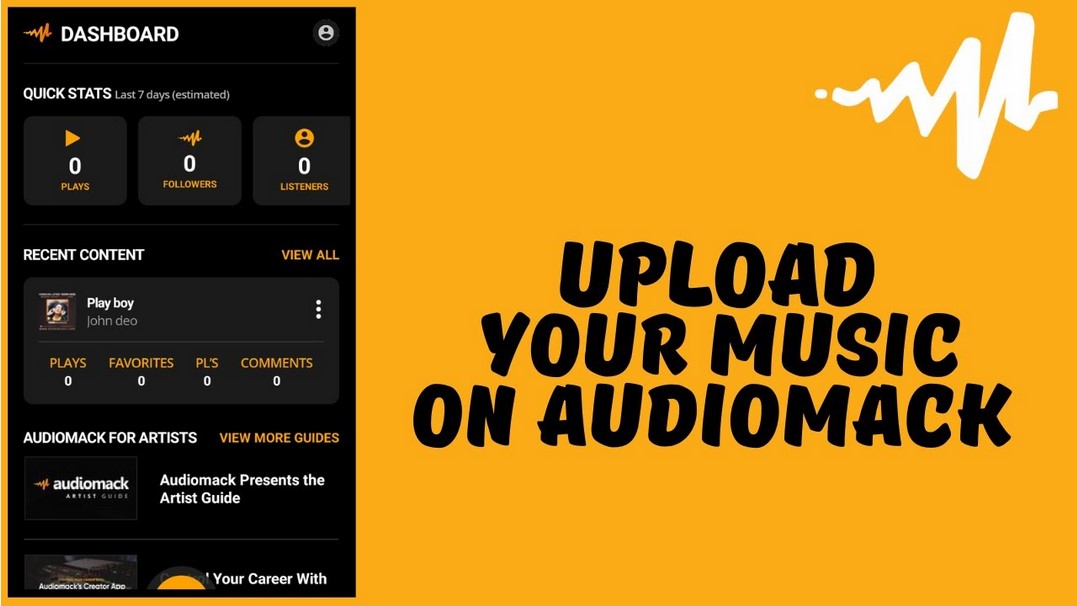
- Free to use with no upfront costs.
- Strong fan engagement tools.
- Opportunities for emerging artists to trend and gain exposure.
- Monetization options through streaming.
- Popular in emerging markets with a growing user base.
Cons:
- Lower revenue potential compared to major platforms like Spotify and Apple Music.
- Limited reach in some markets.
- Competitive environment for playlist placements.
User Experiences and Case Studies:
- Hip-Hop Artist: Leveraged Audiomack, a growing platform for selling music, to release a mixtape that quickly trended on the platform, significantly increasing their follower count and streaming revenue.
- Indie Band: This band used Audiomack’s fan engagement tools to build a dedicated fanbase, illustrating the platform’s effectiveness as one of the platforms for selling music that fosters strong community connections.
Pricing and Subscription:
- Free Account: Unlimited uploads and access to all basic features.
- AMP Program: Free to join, with revenue earned based on stream performance.
5. Tidal
Best For: Artists focused on high-quality audio and fair compensation.
Best Features: High-fidelity streaming, artist-first revenue model, and exclusive content.
Product Description: Tidal is a premium platform for selling music that offers high-fidelity streaming and an artist-first approach to revenue distribution.
Known for its high-quality audio and exclusive content, Tidal is a favorite among artists who prioritize sound quality and fair compensation.
The platform also offers opportunities for artists to release exclusive content and connect with a dedicated fanbase.
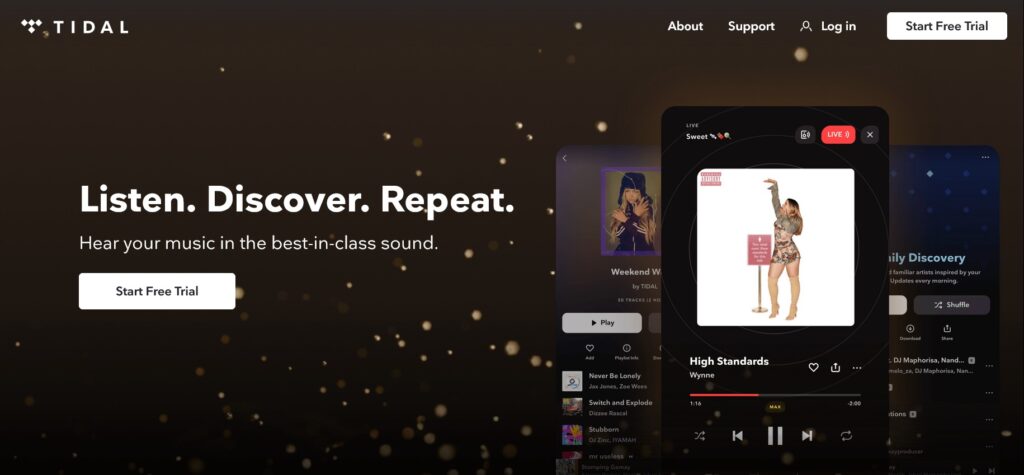
Ryan’s Advice: Ideal for artists who value high-quality audio and want to support a platform that prioritizes fair compensation for musicians.
Best Features for Platforms for Selling Music:
- High-Fidelity Streaming: Offers lossless and high-resolution audio streaming.
- Artist-First Revenue Model: Higher revenue per stream compared to other platforms.
- Exclusive Content: Opportunities to release exclusive tracks, albums, and videos.
- Fan Engagement: Tools to connect with fans through curated playlists and exclusive releases.
- Social Responsibility: Tidal supports social justice initiatives and artist equity.
Product Pros:
- Superior audio quality for discerning listeners.
- Fair compensation model for artists.
- Opportunities for exclusive content releases.
- Strong fan engagement tools.
- Ethical brand image with social responsibility efforts.
Cons:
- Smaller user base compared to Spotify and Apple Music.
- Higher subscription costs for listeners.
- Limited social features.
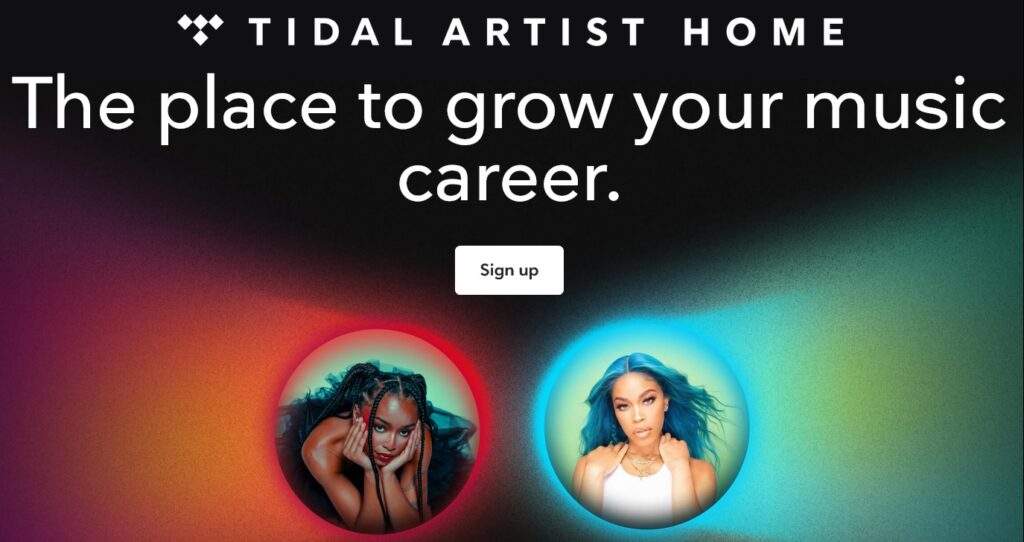
User Experiences and Case Studies:
- R&B Artist: An R&B artist released an exclusive album on Tidal, a high-quality platform for selling music, gaining significant attention and higher-than-average streaming revenue due to Tidal’s focus on high-fidelity audio.
- Jazz Musician: A jazz musician capitalized on Tidal’s superior audio quality to appeal to discerning listeners, highlighting the benefits of using Tidal as a platform for selling music in niche markets.
Pricing and Subscription:
- Tidal HiFi: $9.99/month, offering standard audio quality and access to all content.
- Tidal HiFi Plus: $19.99/month, includes lossless audio, exclusive content, and additional artist royalties.
6. SoundCloud
Best For: Independent artists and DIY musicians looking for a community-driven platform.
Best Features: Community engagement, direct-to-fan sales, and monetization options.
Product Description: SoundCloud is a well-established platform for selling music that has long been a favorite among independent artists and DIY musicians.
With its community-driven approach, SoundCloud allows artists to upload their music for free, engage directly with fans, and sell tracks through its direct-to-fan sales model.
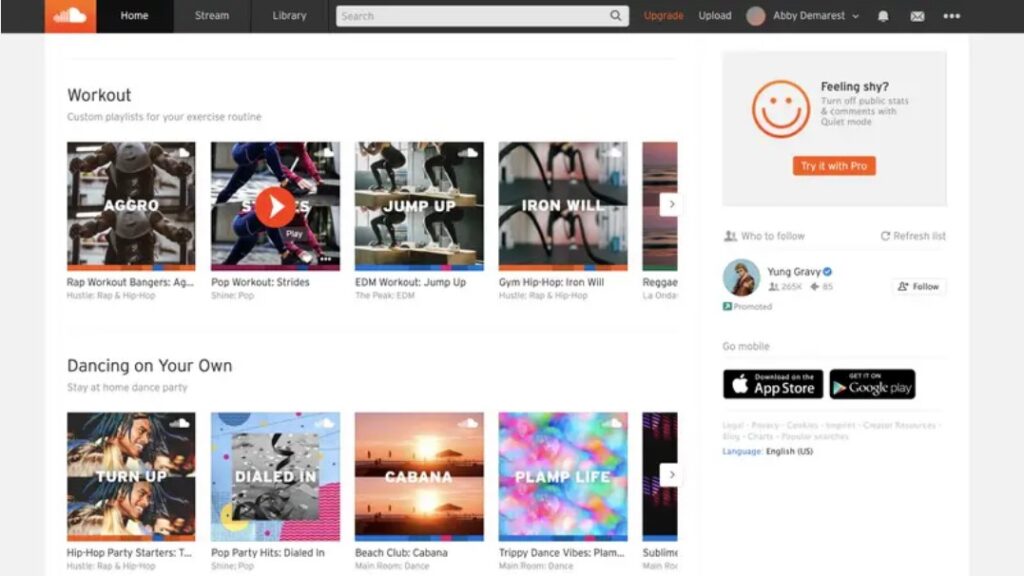
The platform also offers various monetization options through its SoundCloud Premier program.
Ryan’s Advice: Best for artists who want to build a community around their music and engage with fans in a more personal way.
Best Features for Platforms for Selling Music:
- Community Engagement: Engage with fans through comments, reposts, and direct messaging.
- Direct-to-Fan Sales: Sell tracks directly to fans through the platform.
- SoundCloud Premier: Monetize your music through ads, subscriptions, and fan support.
- Playlists and Curated Content: Opportunities to be featured in SoundCloud’s playlists and curated content.
- Collaborative Tools: Collaborate with other artists and producers within the SoundCloud community.
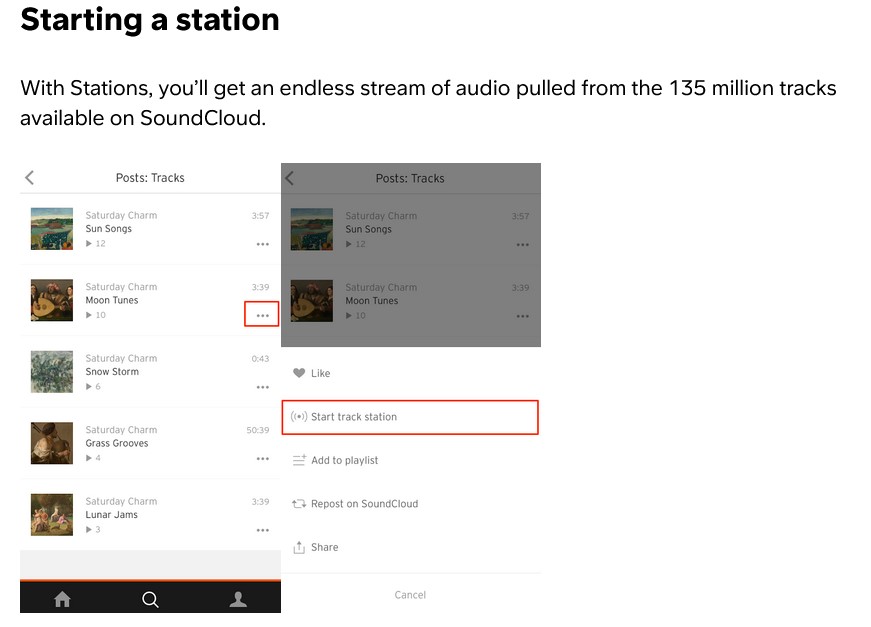
Product Pros:
- Strong community engagement and fan interaction.
- Direct sales options for independent artists.
- Opportunities for monetization through SoundCloud Premier.
- Collaborative features for working with other musicians.
- Popular among independent and emerging artists.
Cons:
- Lower revenue potential compared to major streaming platforms.
- Competitive environment for playlist placements.
- Limited promotional tools.
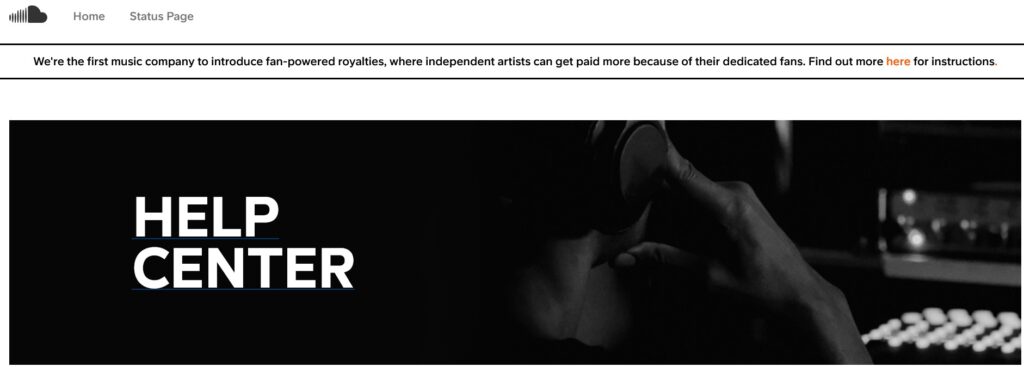
User Experiences and Case Studies:
- Indie Rapper: Built a dedicated fanbase on SoundCloud, leading to sold-out shows and increased merchandise sales.
- Electronic Producer: Used SoundCloud’s collaborative tools to work with other artists, resulting in several successful track releases.
- Band: Leveraged SoundCloud Premier to monetize their music, earning a steady stream of revenue from ads and subscriptions.
Pricing and Subscription:
- Free Account: Unlimited uploads and access to all basic features.
- SoundCloud Go: $4.99/month, offers offline listening and ad-free experience.
- SoundCloud Go+: $9.99/month, includes access to full catalog and higher audio quality.
7. YouTube Music
Best For: Artists looking to combine video content with music distribution.
Best Features: Integration with YouTube, video content monetization, and global reach.
Product Description: YouTube Music is an excellent platform for selling music that leverages the massive audience of YouTube.
Artists can distribute their music alongside music videos and other video content, making it a powerful tool for those who want to engage with fans visually as well as through audio.

The platform also offers monetization options through ads, subscriptions, and YouTube’s Partner Program.
Ryan’s Advice: Ideal for artists who already have a presence on YouTube or want to combine their music with video content to maximize reach and revenue.
Best Features for Platforms for Selling Music:
- Video Integration: Combine music with video content to enhance fan engagement.
- Global Reach: Access YouTube’s vast global audience for maximum exposure.
- Monetization: Earn revenue through ads, subscriptions, and YouTube’s Partner Program.
- Playlists and Recommendations: Opportunities to be featured in YouTube Music’s curated playlists and recommendations.
- Fan Engagement: Tools to interact with fans through comments, live streaming, and community posts.
Product Pros:
- Huge global audience with integrated video and music content.
- Monetization options through multiple revenue streams.
- Strong fan engagement tools.
- Easy integration with existing YouTube channels.
- High discoverability through YouTube’s recommendation algorithm.
Cons:
- Highly competitive platform with a vast amount of content.
- Lower music streaming revenue compared to audio-only platforms.
- Requires video content creation, which may be resource-intensive.
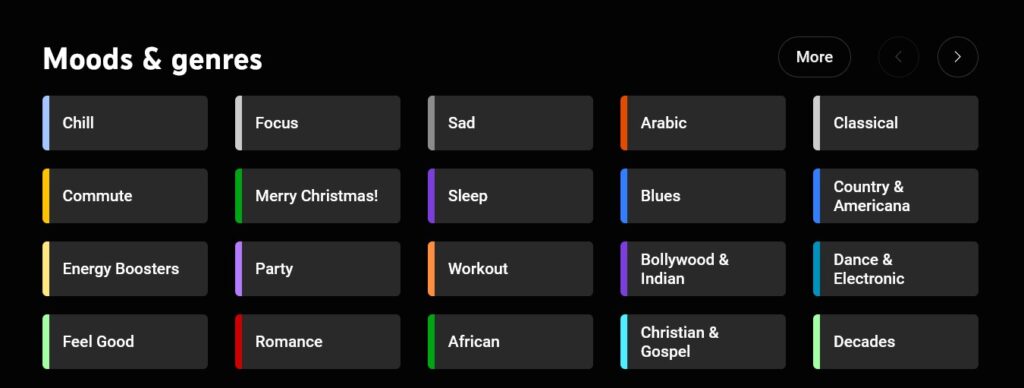
User Experiences and Case Studies:
- Pop Artist: Combined music releases with music videos on YouTube Music, showcasing the platform as a versatile platform for selling music and achieving a 50% increase in overall revenue within a few months.
- Indie Band: Gained international fans by leveraging YouTube Music’s vast global reach, solidifying its role as a powerful platform for selling music and promoting their content effectively.
Pricing and Subscription:
- YouTube Music Premium: $9.99/month, offers ad-free listening, offline downloads, and background play.
- YouTube Premium: $11.99/month, includes all YouTube Music Premium features plus ad-free video watching on YouTube.
8. Pandora
Best For: Artists seeking to reach U.S.-based listeners with a focus on personalized radio.
Best Features: Personalized radio, Music Genome Project, and artist audio messages.
Product Description: Pandora is a unique platform for selling music that focuses on personalized radio experiences.
Powered by the Music Genome Project, Pandora offers highly personalized listening experiences to users based on their musical tastes.
For artists, this means the potential to reach targeted listeners who are most likely to enjoy their music.
Additionally, Pandora offers tools like artist audio messages to engage directly with fans.
Ryan’s Advice: Best for artists looking to reach a highly targeted U.S. audience and engage with fans through personalized experiences.
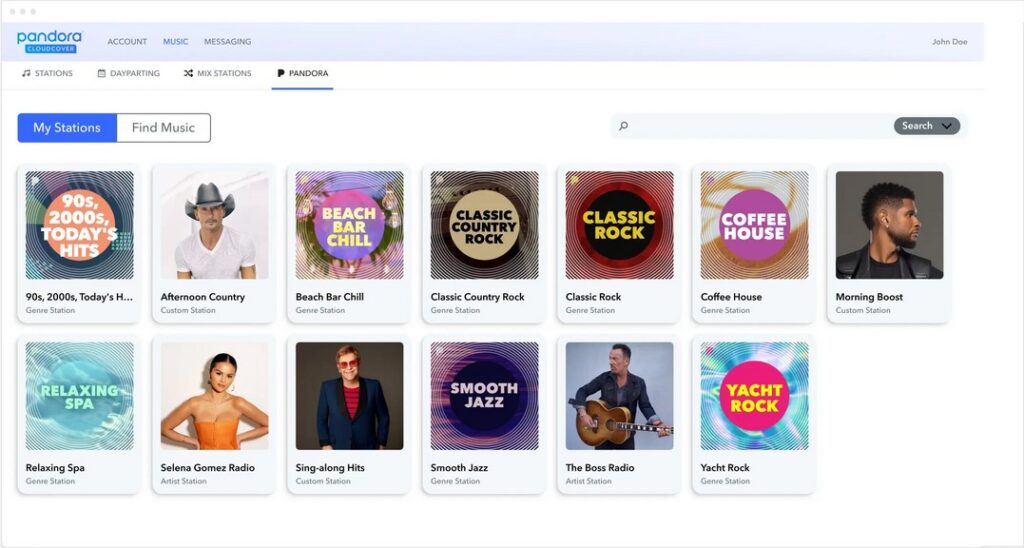
Best Features for Platforms for Selling Music:
- Personalized Radio: Leverage Pandora’s Music Genome Project to reach listeners with tailored music recommendations.
- Artist Audio Messages: Connect with fans by recording personalized messages that play between songs.
- Pandora AMP: Access tools for promoting music and analyzing listener data.
- In-Depth Analytics: Understand your audience with detailed analytics on who is listening and where.
- Ad-Supported and Subscription Models: Earn revenue through ads or subscription-based listening.
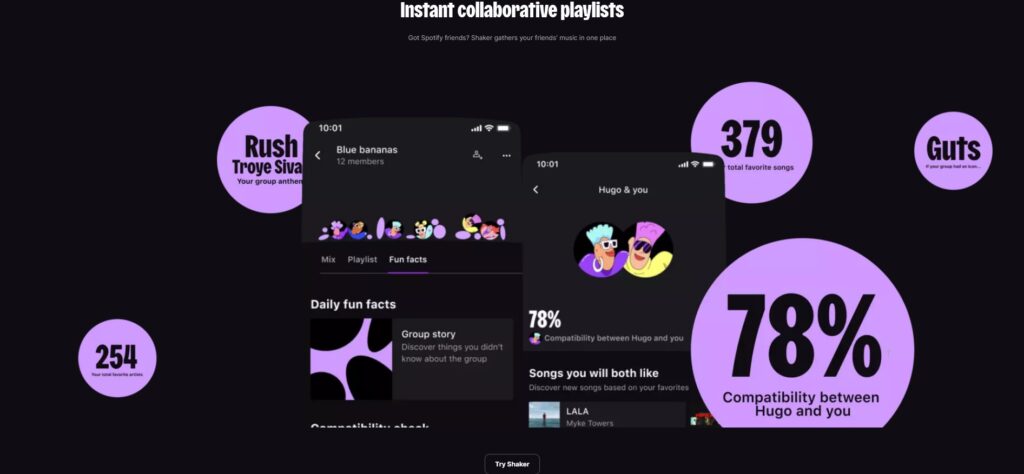
Product Pros:
- Highly personalized music discovery for listeners.
- Strong focus on U.S. market with a large user base.
- Artist audio messages provide a unique way to engage with fans.
- Robust analytics and promotional tools.
- Opportunities to be featured in Pandora’s curated stations.
Cons:
- Limited to the U.S. market, reducing global reach.
- Lower royalties compared to on-demand streaming services.
- Competitive environment for station features.
User Experiences and Case Studies:
- Country Artist: Grew a dedicated U.S. fanbase through Pandora’s personalized radio feature, making it a highly effective platform for selling music for targeting specific demographics.
- Indie Singer-Songwriter: By using Pandora AMP to target specific listener demographics, this singer-songwriter increased engagement and merchandise sales, proving Pandora’s value as a platform for selling music.
Pricing and Subscription:
- Pandora Free: Ad-supported with access to personalized stations.
- Pandora Plus: $4.99/month, offers ad-free listening with more skips and replays.
- Pandora Premium: $9.99/month, includes on-demand listening and offline downloads.
9. Deezer
Best For: Artists looking for a platform with global reach and a focus on high-quality streaming.
Best Features: Global reach, HiFi audio, and artist-centric tools.
Product Description: Deezer is a global platform for selling music that offers artists the ability to reach listeners worldwide with high-quality streaming options.
With a focus on HiFi audio and a vast catalog, Deezer is a great choice for artists who want to ensure their music is available in the best possible quality.
Deezer also offers tools for artists to analyze their audience and promote their music through curated playlists and editorial features.
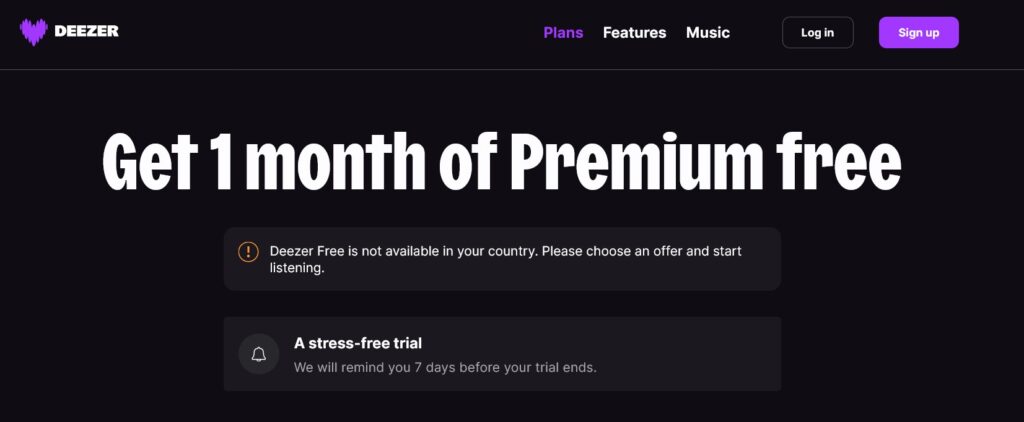
Ryan’s Advice: Ideal for artists who prioritize audio quality and want to reach a diverse, global audience.
Best Features for Platforms for Selling Music:
- Global Reach: Access a worldwide audience with Deezer’s extensive user base.
- HiFi Streaming: Offer your music in high-quality audio formats to appeal to audiophiles.
- Deezer for Creators: Tools for analyzing audience data and promoting music.
- Curated Playlists: Opportunities to be featured in Deezer’s editorial playlists and channels.
- Fan Engagement: Tools to connect with fans through exclusive content and social media integration.
Product Pros:
- High-quality streaming options with HiFi audio.
- Strong global presence, especially in Europe and Latin America.
- Artist-centric tools for promotion and analytics.
- Opportunities for playlist placements.
- Diverse audience with varied music tastes.
Cons:
- Smaller user base compared to Spotify and Apple Music.
- Lower visibility in the U.S. market.
- Competitive environment for playlist features.
User Experiences and Case Studies:
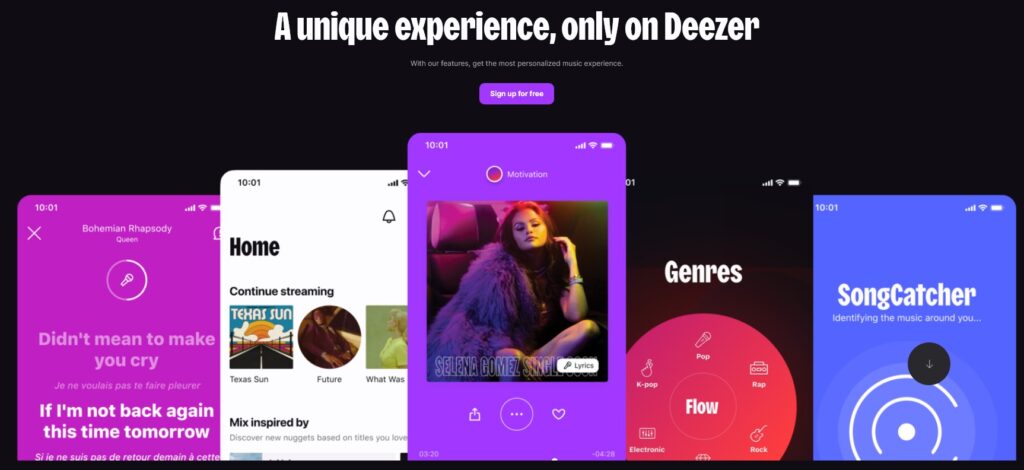
- Jazz Artist: Released an album in HiFi quality on Deezer, capitalizing on the platform’s focus on high-quality audio, and demonstrated Deezer’s potential as a platform for selling music to niche audiences.
- Latin Pop Singer: Leveraged Deezer’s strong presence in Latin America, making it a key platform for selling music to build a dedicated fanbase and increase concert attendance.
Pricing and Subscription:
- Deezer Free: Ad-supported with access to the full catalog.
- Deezer Premium: $9.99/month, includes ad-free listening, offline downloads, and higher audio quality.
- Deezer HiFi: $14.99/month, offers lossless FLAC audio for audiophiles.
10. Boomplay
Best For: Artists looking to target the African music market with a mobile-first platform.
Best Features: Strong presence in Africa, mobile-first design, and artist promotion tools.
Product Description: Boomplay is a leading platform for selling music in Africa, offering artists a unique opportunity to reach a rapidly growing and engaged audience.
With a mobile-first design and strong emphasis on local content, Boomplay is ideal for artists who want to tap into the African music market.
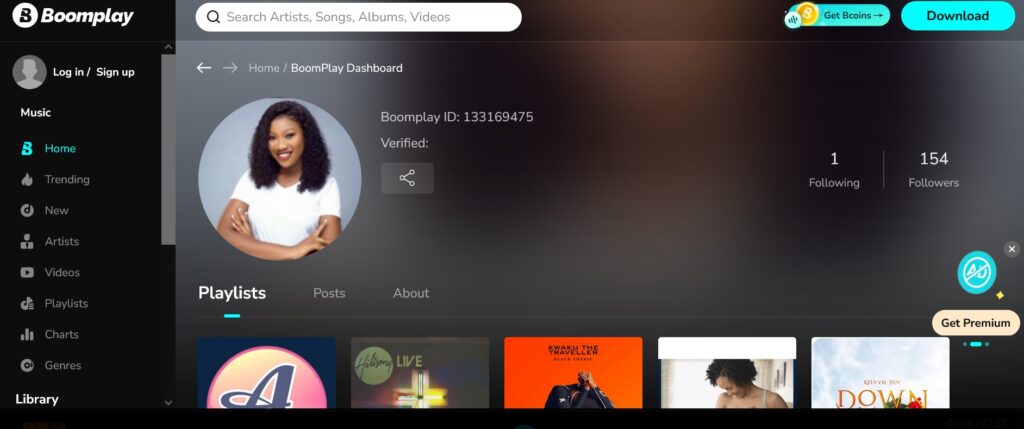
The platform offers tools for promoting music, analyzing audience data, and connecting with fans through exclusive content and social media integration.
Ryan’s Advice: Best suited for artists aiming to penetrate the African market and reach mobile-first listeners.
Best Features for Platforms for Selling Music:
- African Market Focus: Reach a highly engaged audience in Africa, with a focus on local and international content.
- Mobile-First Design: Optimized for mobile users, reflecting the dominant mode of music consumption in Africa.
- Artist Promotion: Tools for promoting music through playlists, editorial features, and social media integration.
- Boomplay for Artists: Access analytics and promotional tools to grow your audience.
- Fan Engagement: Connect with fans through exclusive content, live sessions, and social media.
Product Pros:
- Strong focus on the African music market.
- Mobile-first platform with a large and growing user base.
- Artist-centric tools for promotion and audience engagement.
- Opportunities for playlist and editorial features.
- Increasing recognition as a key platform for African and international artists.
Cons:
- Limited global reach outside of Africa.
- Smaller user base compared to global platforms like Spotify.
- Competitive environment for playlist placements and editorial features.

User Experiences and Case Studies:
- Afrobeats Artist: Tapped into Boomplay’s strong presence in Africa, using the platform’s tools to grow a dedicated following, proving Boomplay’s effectiveness as a platform for selling music in emerging markets.
- Gospel Singer: Used Boomplay’s promotional tools to connect with fans through live sessions, making it a crucial platform for selling music and boosting concert attendance.
Pricing and Subscription:
- Boomplay Free: Ad-supported with access to a vast catalog of music.
- Boomplay Premium: Varies by region, offers ad-free listening, offline downloads, and higher audio quality.
Step-by-Step Guide to Setting Up and Selling Music on the Best Platform in 2025
For artists looking to start using one of the Profitable Platforms for Selling Music, here’s a step-by-step guide to getting started:
- Choose Your Platform: Evaluate your goals and select the platform that best aligns with your needs (e.g., Spotify for global reach, Audiomack for emerging artists).
- Sign Up and Create an Account: Register on the chosen platform or through a distribution service like DistroKid or TuneCore.
- Prepare Your Music: Ensure your tracks are properly mixed, mastered, and formatted according to the platform’s specifications.
- Upload Your Music: Follow the platform’s guidelines to upload your tracks, album art, and metadata.
- Set Up Your Artist Profile: Complete your artist profile with a bio, photos, and social media links.
- Promote Your Music: Use the platform’s marketing tools, such as playlist pitching, ads, and social media integrations, to promote your releases.
- Analyze Your Performance: Use analytics tools provided by the platform to track your music’s performance and adjust your strategy accordingly.

Analyzing the Marketing Tools and Strategies Available on Music Selling Platforms in 2025
The most Profitable Platforms for Selling Music offer a variety of marketing tools and strategies to help artists promote their music effectively. Here’s a detailed breakdown of the key tools available on each platform:
- Spotify
- Spotify for Artists: Provides tools for profile management, playlist pitching, and audience insights, allowing artists to optimize their presence on the platform.
- Spotify Ad Studio: Allows artists to create audio ads to promote their music to targeted audiences, increasing their chances of reaching new listeners.
- Apple Music
- Apple Music for Artists: Offers comprehensive data analytics, enabling artists to understand their audience better, submit music for playlist consideration, and engage with fans.
- Curated Playlists: Opportunities to be featured in Apple’s editorial playlists, which can significantly boost an artist’s visibility and streams.
- Amazon Music
- Amazon AMP: Provides tools for promoting music through Amazon’s extensive retail network and integrating with social media for broader reach.
- Alexa Promotions: Allows artists to promote their music via voice commands on millions of Alexa-enabled devices, tapping into Amazon’s vast ecosystem.
- Audiomack
- Audiomack Monetization Program (AMP): Offers tools for monetizing music and promoting it through Audiomack’s trending charts and curated playlists.
- Fan Engagement: Provides tools for interacting with fans directly through comments, messages, and social sharing, fostering a strong community around the artist’s music.
- Tidal
- Tidal Rising: A program dedicated to promoting emerging artists through curated content, exclusive releases, and editorial features, helping them gain recognition.
- Tidal for Artists: Offers analytics, promotional tools, and opportunities for exclusive content releases, allowing artists to connect deeply with their audience.
- YouTube Music
- YouTube Creator Studio: Allows artists to manage their channels, engage with their audience through comments, and use advanced analytics to track performance.
- YouTube Ads: Enables artists to create video ads or promote their music videos across YouTube, tapping into the platform’s vast user base.
- Pandora
- Pandora AMP: Provides artists with tools to promote their music on Pandora’s personalized radio stations, including the ability to create artist audio messages that engage listeners directly.
- Artist Marketing Platform (AMP): Offers insights and analytics to help artists understand their audience and tailor their promotional strategies.
- Deezer
- Deezer for Creators: Provides tools for artists to analyze their audience data, pitch their music for playlist inclusion, and promote their tracks through Deezer’s editorial features.
- Sponsored Content: Allows artists to promote their music through sponsored playlists and ads on Deezer, increasing their visibility on the platform.
- Boomplay
- Boomplay for Artists: Offers analytics and promotional tools specifically designed for the African market, helping artists target and engage with a rapidly growing audience.
- Social Media Integration: Provides tools for artists to promote their music directly on social media platforms popular in Africa, enhancing their reach and engagement.
- SoundCloud
- SoundCloud Premier: Enables artists to monetize their music, access detailed analytics, and promote their tracks through SoundCloud’s community-driven platform.
- Repost by SoundCloud: Offers distribution and promotional tools that help artists manage their music across multiple platforms, maximizing their reach and revenue potential.
Expert Tips on Maximizing Music Sales Through Top Platforms in 2025
Maximizing sales on Profitable Platforms for Selling Music requires strategic planning and execution. Here are expert tips to help you boost your music sales:
- Leverage Playlists: Aim to get your music featured on curated playlists, as these can significantly increase your streams and visibility.
- Engage with Fans: Use the platform’s tools to connect with your audience through comments, messages, and social media.
- Optimize Your Profile: Ensure your artist profile is complete, with high-quality images and an engaging bio to attract more listeners.
- Utilize Analytics: Regularly review your performance data to understand what works and refine your marketing strategies.
- Promote Across Multiple Platforms: Don’t rely on just one platform; distribute your music across several to reach a broader audience.
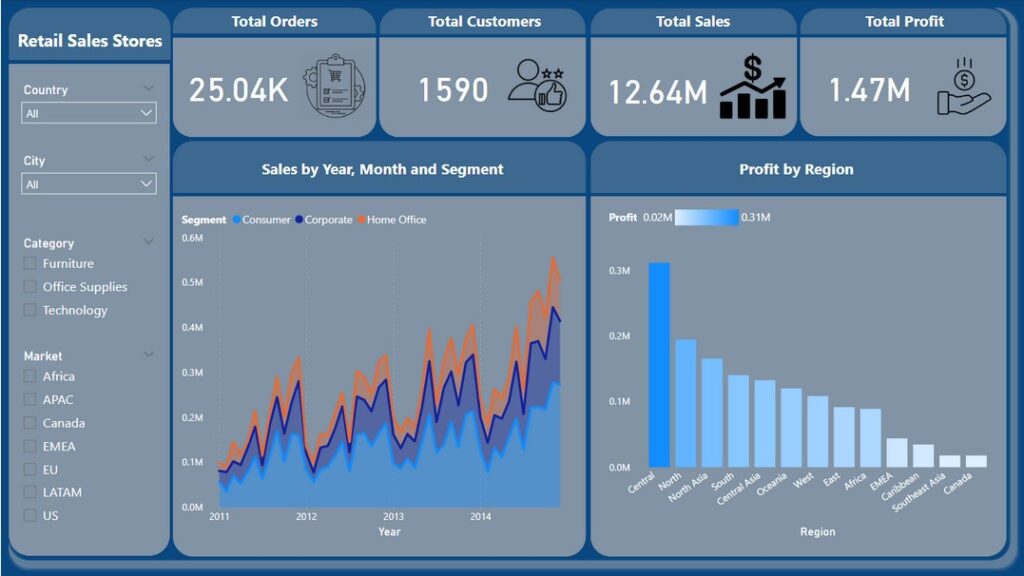
FAQ Section
Q1: What are the most profitable platforms for selling music in 2025?
Spotify, Apple Music, Amazon Music, Audiomack, Tidal, and YouTube Music.
Q2: How can I maximize my music sales on these platforms?
Focus on playlist placements, engage with fans, and use analytics to improve your strategy.
Q3: What are the key factors to consider when choosing a platform for selling music?
Revenue share, global reach, marketing tools, and user interface.
Q4: How do I get my music featured on playlists?
Submit your music through artist tools and build relationships with curators.
Q5: Can I use more than one platform to sell my music?
Yes, using multiple platforms can help reach a broader audience and increase revenue.
